Framing History
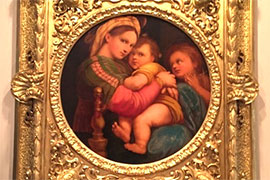
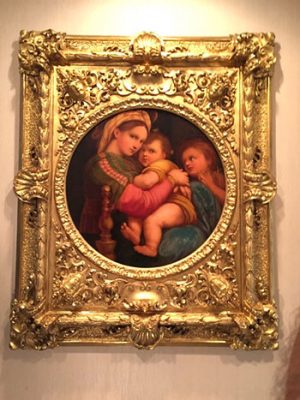
If a picture, as the saying goes, is worth a thousand words, what about a picture frame?
This is no ordinary frame, either. As detailed by Robert C. Dean, MD, in a December 2018 email to the President’s Office at Stetson, this frame represents a university tale for the ages.
Dean, of nearby New Smyrna Beach, emailed to assess the interest of President Wendy B. Libby, PhD, in his “donation of a piece of art with strong historical connections” to Stetson.
Libby subsequently accepted the donation on behalf of the university, and the framed painting now can be seen on campus. Yet, that’s not the real story — not the story that dates back to the 1880s.
As Dean tells it, that’s when George Prentice Carson, MA, LLD, his grandfather, was a professor of history and the dean at Stetson, a position he held from the 1880s to the late 1930s.
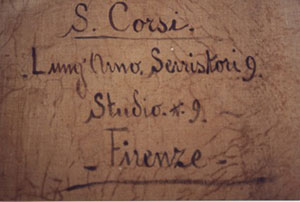
The story: While on a vacation tour of Italy in 1908, Carson — later described by a local newspaper as a “beloved educator for 50 years” — met Santi Corsi, an artist, at the Pitti Palace (Palazzo Pitti) in Florence. Corsi is well-known today for oil paintings of the interior rooms of that famed palace, as well as for paintings of the classics displayed there. One such Corsi painting was a remake of Raphael’s Madonna della Seggiola, depicting Mary embracing the child Christ, while the young John the Baptist devoutly watches. Raphael (1483-1520) was considered among the greatest painters of his time. He had painted various Madonnas, with the two most famous being Madonna della Seggiola and Sistine Madonna, which was painted in the Sistine Chapel in Rome.
Carson, initially hesitant, purchased the painting from Corsi.
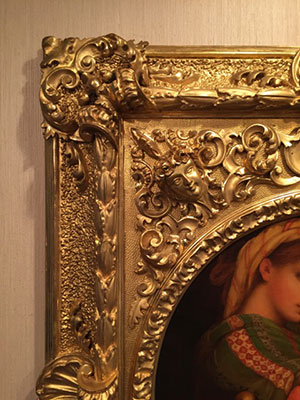
Mostly, Carson was struck by the Florentine frame, composed of gold leaf over gesso on linden wood and river pebbles. At the time, it was more than 500 years old and measured roughly 45 inches by 55 inches.
Subsequently, the framed painting was delivered directly to Stetson. There, it was ceremoniously unpacked by the university’s director of grounds and displayed for decades on a wall in Carson’s office and, later, at his home. In a 1945 newspaper article celebrating his 81stbirthday, Carson cited that the painting was “the most valuable single piece that I own or possess. It is more valuable than my automobile.” According to that same article, Carson paid $900 for the painting, a reduced price offered by Corsi, and $200 for the frame.
The story continues.
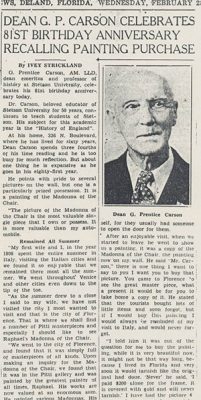
In 1962, upon the death of Carson’s wife — Dean’s grandmother — ownership of the painting passed from the Carson estate to Stetson, where it was mounted on a wall in Elizabeth Hall for more years.
Then in 1999, when Robert Dean visited the Pitti Palace and viewed Raphael’s original there, his childhood interest in his grandfather’s painting was rekindled. Upon learning from Stetson’s art department that the painting was in disrepair and being stored, Dean reacquired and repaired the painting. And for nearly the past two decades, it hung in his New Smyrna Beach residence — until Dean sent that email to the President’s Office in hopes of returning the painting to its “original home as desired by my grandfather,” he wrote.
Today, all these years later, the painting now is showcased in the office of Stetson’s newest dean, Elizabeth Skomp, PhD, head of the College of Arts and Sciences and a professor of world languages and cultures (Russian).
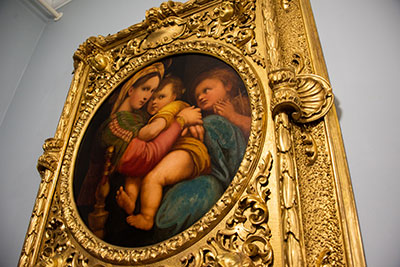
Photo: Ciara Ocasio/Stetson University
“The Santi Corsi painting provides a visual link to Stetson’s past and former Dean George Prentice Carson, who first acquired the painting,” commented Skomp, who arrived on campus last July. “Carson’s 50-year Stetson career included contributions to the liberal arts and sciences alike: Originally appointed as a professor of natural sciences, Carson was also a longtime professor of history. Given its provenance, the painting signals Stetson’s enduring commitment to arts and sciences. It is a striking addition to the Dean’s Office suite, not least because of the ornate Florentine frame.”
Fittingly, President Libby frames an ending to the story.
“The painting and its frame are simply gorgeous,” Libby said. “We are so grateful for Dr. Robert Dean’s gift and that he so thoughtfully considered Stetson as the perfect place for this artwork.”
-Michael Candelaria



